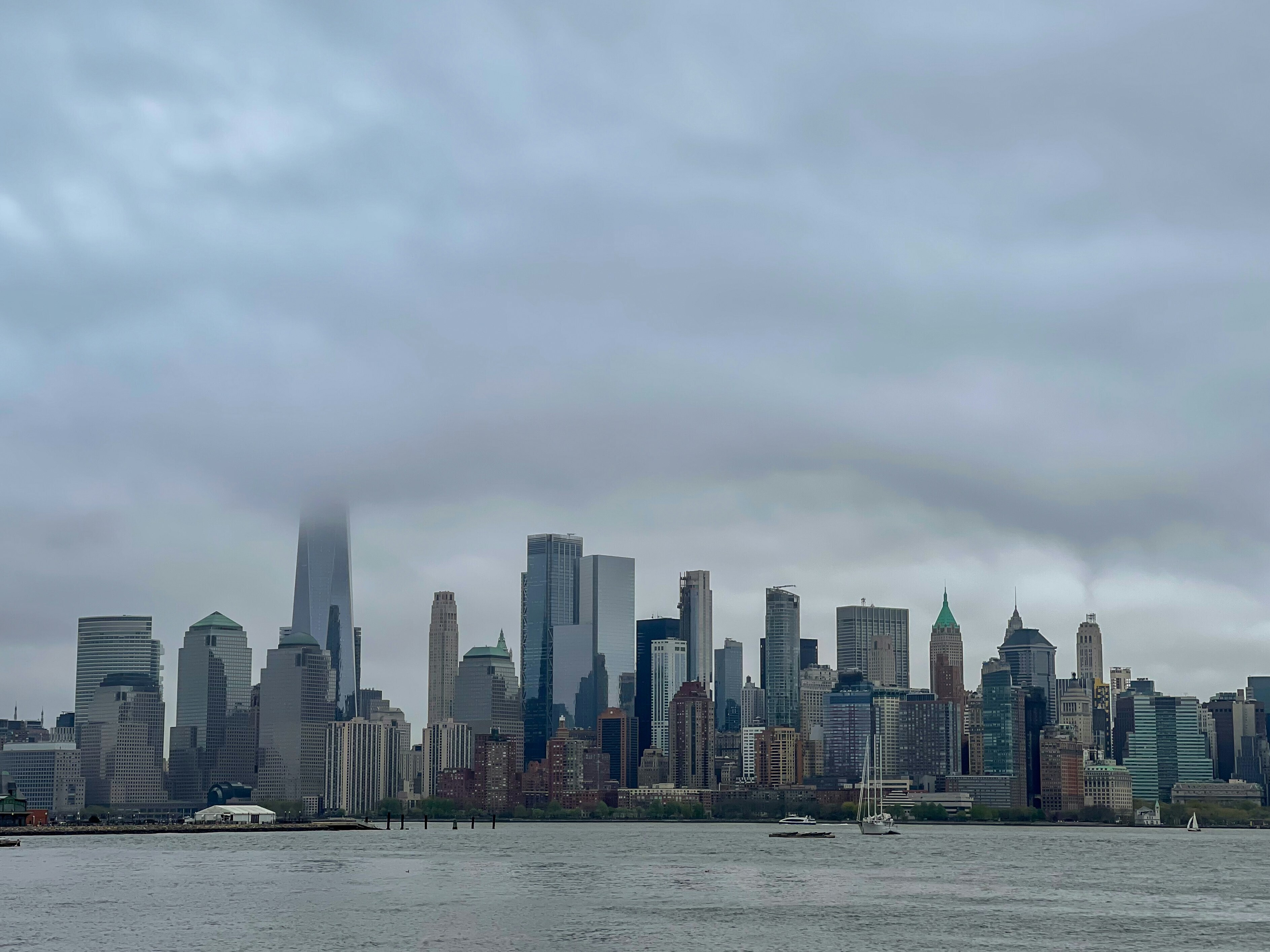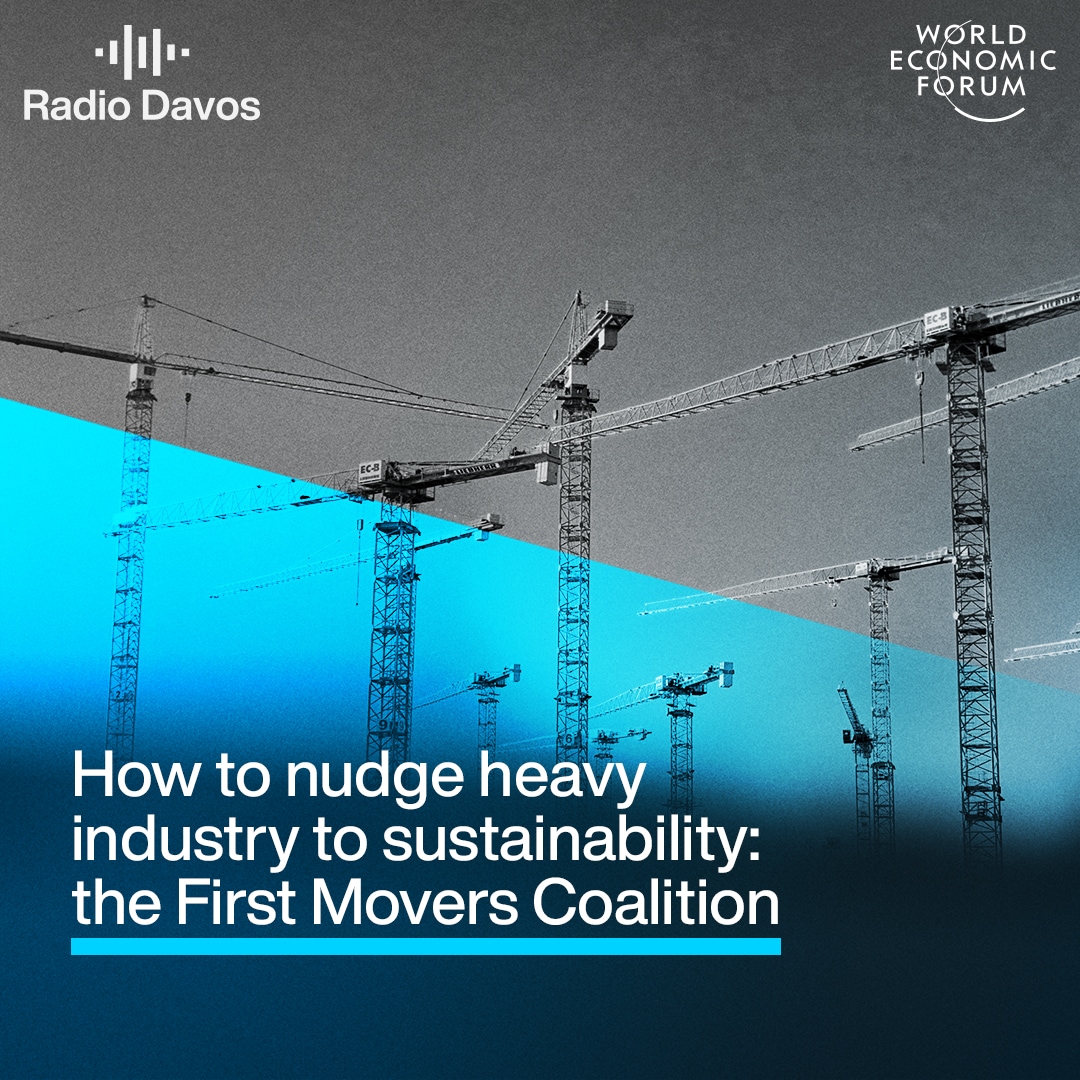International Day of Clean Air for blue skies: What is it and why is it important?
The International Day of Clean Air for blue skies is a yearly reminder that the world must urgently tackle air quality.
Image: Unsplash/Chris LeBoutillier
- Air pollution is the biggest external cause of ill-health and premature deaths.
- The International Day of Clean Air for blue skies is a yearly reminder that the world must urgently tackle air quality.
- The World Economic Forum’s Global Future Council on the Future of Clean Air seeks to support governments, business and civil society in creating solutions to the global air quality crisis.
Air pollution is a killer. The United Nations Environment Programme (UNEP) says it blights the lives and health of billions of people. Children and elderly people are disproportionately affected by poor air quality.
Microscopic particles (known as PM2.5) are the biggest danger to human health, according to research by Chicago University. The study says their impact on life expectancy “is comparable to that of smoking, more than 4 times that of high alcohol use, more than 5 times that of transport injuries like car crashes, and more than 6 times that of HIV/AIDS”.
UNEP insists only action on a global scale can solve the air pollution crisis, which is why the International Day of Clean Air for blue skies is marked each year.
What is the International Day of Clean Air for blue skies?
The United Nations General Assembly designated 7 September as the day to raise awareness and drive action on combating air pollution. That’s the goal of the International Day of Clean Air for blue skies, which was inaugurated in 2020.
UNEP says the day “aims to build a global community of action, encouraging countries to collaborate in tackling air pollution to protect our ecosystems. This day provides a platform for cooperation at individual, national, regional, and international levels to work together and Invest in #CleanAirNow.”
What's the World Economic Forum doing to tackle air pollution?
Why is it important?
According to the Health Effects Institute, there were 8.1 million deaths due to air pollution in 2021. Poor air quality is the biggest external threat to health, according to the Air Quality Life Index (AQLI).
The AQLI has developed a tool to calculate how much longer people would live if they were able to breathe clean air. The platform suggests people in parts of the industrial north of India would live an extra 6.8 years if the air was safe to breathe.
But it’s not just in heavily polluted areas where people are affected by poor air quality. The AQLI says every person in the world would gain 1 year and 11 months of life expectancy if fine particulates in the atmosphere were reduced to World Health Organization recommended levels.
What’s being done about air pollution?
This year’s #WorldCleanAirDay has the theme “Invest in #CleanAirNow”, with an emphasis on increased investment as well as shared responsibility to combat air pollution.
Here are five things to know about air pollution and where we’re at in tackling it.
1: Black carbon in the Arctic
Air pollution impacts ecosystems as well as human health. The Arctic is heating up four times faster than the rest of the planet, melting ice sheets and permafrost, which in turn releases more greenhouse gases. A significant cause of this is the release of black carbon particles into the atmosphere. Black carbon comes from burning fossil fuels. These tiny particles can drift thousands of miles and researchers have discovered they are making snowfields in Antarctica darker. Snow that’s contaminated with black carbon absorbs more sunlight and converts it to heat, which melts the snow at a faster rate.
2: Politicians must stand up for clean air
This has been a defining year for democracy. By the end of 2024, voters in 64 countries will have gone to the polls to elect their governments. Clean air campaigners are urging every government to make clean air an urgent priority. They argue that: “By showing strong leadership on air pollution, coupled with ambitious and bold policies and investment, governments will see benefits that go far beyond cleaner air. Ramping up action on clean air is critical to boosting health, cutting emissions, enabling sustainable economic development, and reducing poverty and inequality – all things that should be in every manifesto in this watershed year for democracy.”
3: Subsidy reform can make our air cleaner
Fossil fuels are a major source of PM2.5 pollution and governments spend over $600 million annually on fossil fuel subsidies, money that could be tapped to help solve the problem. Carefully considered reforms that have been successful and lasting have shared two common principles:
- Compensation for those who may lose from subsidy removal and oppose the reform.
- Credible information is pivotal in catalyzing the demand for environmental change.
4: Open data is vital to improving air quality
Improving air quality is possible, but relies on having good quality, open data that the public can access. Asking air quality sensor companies about their data policies can promote consumers' data ownership rights and allow more people to share more data with the public.
5: Action on air pollution reduces the dangers
The European Union has a target of reducing premature deaths from fine particulate matter (PM2.5) pollution by 55% by 2030 (compared with 2005 figures). To reach this target, the EU has put in place the National Emission Reduction Commitments Directive which aims to reduce the most dangerous pollutants. While air pollution overall has fallen over the past two decades, the EU says it remains the biggest environmental health risk.
The European Environment Agency (EEA) used monitoring data to rank cities with the cleanest – and the most polluted – air. The EEA’s pollution viewer (pictured below) categorizes air quality as:
Good: Levels of particulate matter that do not exceed the annual guideline value of the World Health Organization of 5 μg/m3,
Fair: Levels above 5 and not exceeding 10 μg/m3,
Moderate: Levels above 10 and not exceeding 15 μg/m3,
Poor: Levels above 15 and not exceeding 25 μg/m3, and
Very poor: Levels at and above the European Union limit value of 25 μg/m3.
Cities in Sweden, Portugal and the Nordic countries top the rankings for the lowest levels of life-threatening PM2.5 pollutants. At the other end of the scale, Cremona in Italy (23.3 μg/m3), Nowy Sącz in Poland (24 μg/m3) and Salvonski Brod in Croatia (26.5 μg/m3) have the highest levels of PM2.5 air pollution in Europe.
The World Economic Forum’s Global Future Council on the Future of Clean Air seeks to support governments, business and civil society in a shared mission to collaborate on creating solutions to the global air quality crisis.
Public/private cooperation will be crucial in ensuring every person has the right to breathe clean air, it says. And the International Day of Clean Air for blue skies is an important moment to raise awareness and prompt transformative action.
Accept our marketing cookies to access this content.
These cookies are currently disabled in your browser.
Don't miss any update on this topic
Create a free account and access your personalized content collection with our latest publications and analyses.
License and Republishing
World Economic Forum articles may be republished in accordance with the Creative Commons Attribution-NonCommercial-NoDerivatives 4.0 International Public License, and in accordance with our Terms of Use.
The views expressed in this article are those of the author alone and not the World Economic Forum.
Related topics:
Forum Stories newsletter
Bringing you weekly curated insights and analysis on the global issues that matter.
More on Climate ActionSee all
Cornelius Pieper and Nicky Collins
September 15, 2025
Lindsey Hall
September 15, 2025
Joe Myers
September 12, 2025
Emilian Axinia
September 11, 2025






